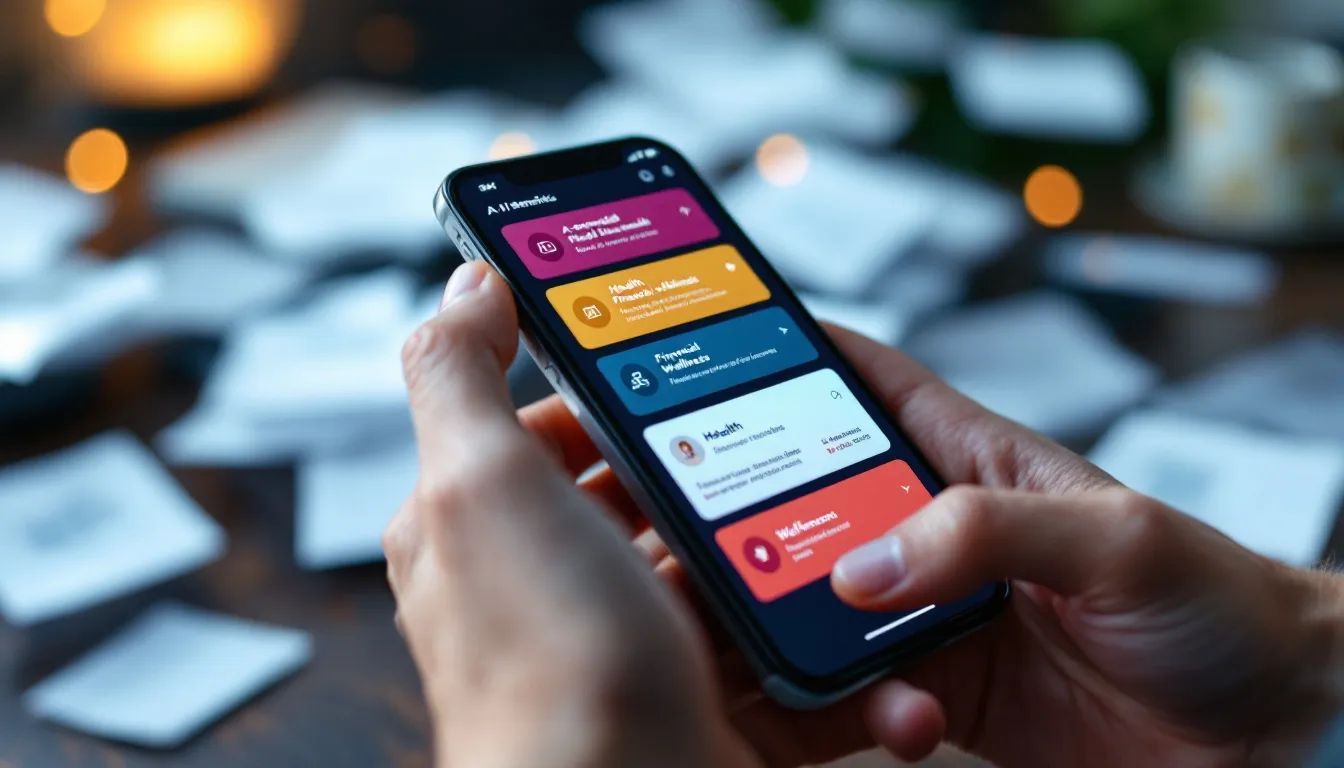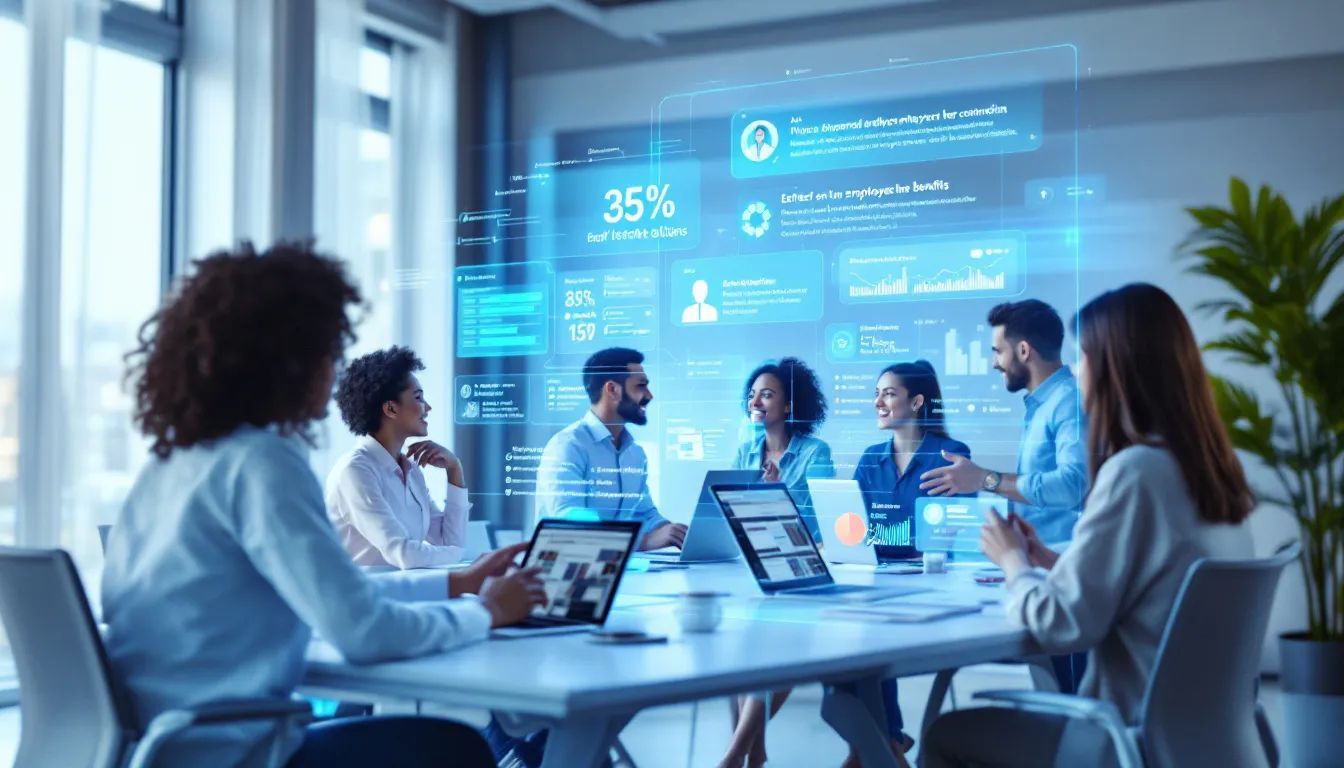1. Introduction: The Evolution of AI in Employee Benefits
In today’s fast-changing workplace, technology is reshaping how companies deliver employee benefits. In the past 100 years, computers have accelerated from simple calculators to sophisticated systems, and now emerging tools like ai in employee benefits are setting new standards for personalization and efficiency. Employers eagerly explore how this technology can simplify benefit enrollment, optimize decisions, and ease administrative work. In fact, many forward-thinking organizations are viewing ai in employee benefits as a critical driver of better employee experience and enhanced cost management in HR departments.
The evolution of smart HR solutions has made it possible for digital tools to guide employees through benefits selection and management processes effortlessly. This technology does not only automate traditional tasks; it also transforms the design of benefits programs to align with individual needs. Employees now expect effortless access to accurate information and personalized recommendations that make benefits engagement straightforward. In this dynamic environment, businesses are investing in advanced systems and learning from real-world applications, embracing the potential of ai in employee benefits.
Technology is not just changing processes; it is transforming lives.
This article dives deep into how modern solutions are redefining employee benefits. We will examine how intelligent systems reshape enrollment procedures, personalize choices, leverage data insights, enhance efficiency, and address ethical concerns. You will discover how innovative methods, such as micro-events orchestrated by AI-powered chatbots, add a human touch without compromising on efficiency.
Table 1 below outlines a snapshot comparison between traditional and modern benefits management, highlighting the stark differences in user experience, personalization, and operational efficiency.
This foundation sets the stage for a detailed exploration of how technology is revolutionizing the benefits landscape.
2. Redefining Employee Benefits with AI-Powered Solutions

Recent advancements in intelligent systems have reimagined the entire benefits experience for employees. Companies are moving away from traditional, static programs and embracing dynamic solutions that adapt to individual circumstances. These emerging technologies extend far beyond the confines of open enrollment. For example, interactive digital guides and chatbots now answer questions, recommend tailored plans, and even assist in managing claims processing. Organizations that implement ai in employee benefits see a reduction in administrative burden and an increase in satisfaction across employee groups.
The role of technology in benefits is most evident when it personalizes the enrollment experience. Previously, a one-size-fits-all method often left employees uncertain about available options. With modern AI-powered solutions, each employee receives carefully curated information that matches their personal profile. This data-driven approach ensures that every worker finds plans best suited to their situation. In turn, this targeted assistance not only improves benefit uptake but also reduces the likelihood of errors in plan selection.
Interactive chatbots guide users through decision-making processes and offer immediate answers to common questions. They make the benefits experience more engaging and accessible—especially during times of transition such as new hire onboarding or changes in family status. Furthermore, employers continuously learn from employee interactions, which refines future recommendations. The use of ai in employee benefits here is evident in the way digitally derived insights lead to robust and adaptable benefit schemes.
Intelligent systems create a smarter pathway for employees to access the benefits that truly matter.
Below are some key enhancements brought by modern solutions:
• Enhanced guidance during enrollment
• Real-time support through digital assistants
• Scalable systems that match diverse employee needs
Another table emphasizes the improvements AI-powered solutions bring:
Using ai in employee benefits in this context has transformed static processes into dynamic systems that continuously learn and evolve. This fresh approach brings much-needed agility to HR departments, enabling them to quickly adapt to changing workforce needs.
3. Personalization at Scale: Tailoring Benefits Using AI
Personalization has become a cornerstone in reshaping benefits. Employees no longer wish to navigate a maze of standard offerings; they demand options that reflect their unique circumstances. This rising trend has led to the integration of intelligent systems in tailoring benefits on a large scale. With ai in employee benefits, benefit platforms can analyze individual data points—such as demographics, family status, and past choices—to recommend highly personalized benefit packages. These recommendations help employees effortlessly discover plans that support their health, wellness, and financial stability.
A notable part of these systems involves leveraging complex data analytics that drives personalization. By interpreting historical behavior, preferences, and even subtle cues from user interactions, modern benefits platforms offer choices that would have been impossible to replicate in a manual process. Furthermore, employees receive personalized communication that guides them through the benefits landscape, ensuring they grasp every aspect of their available options. This means fewer questions left unanswered and more peace of mind when selecting a plan.
Personalized experiences cultivate a sense of care, transforming benefits enrollment into a confident decision-making journey.
Below is a bullet list summarizing ways personalized benefits can help employees:
• Tailored recommendations based on individual history
• Automated suggestions for optimal coverage
• Custom messaging through emails and SMS
• Dynamic adjustments reflecting real-time data
4. Data-Driven Insights: Analytics and Predictive Modeling in Benefits
Leveraging data to inform decisions is at the core of modern benefits management. With tools that incorporate predictive analytics, decoding patterns of employee behavior comes naturally. Detailed insights help HR teams understand how employees interact with benefits and identify trends that drive engagement. For example, when analyzing large datasets, companies can determine the most popular benefit options and adjust their offerings accordingly. Using ai in employee benefits within this data-driven framework enables companies to optimize cost management while elevating the employee experience.
Predictive models serve as invaluable tools, foretelling employee needs well before the open enrollment period. These models use historical data to anticipate future demands, allowing organizations to plan benefit structures that are proactive rather than reactive. Through sentiment analysis and comprehensive segmentation, they identify areas where small adjustments can lead to significant improvements in overall satisfaction.
Data is a powerful ally that, when paired with intelligent systems, tells a story of what employees truly value.
An ordered list can outline the steps HR teams might take to enhance their strategies:
- Collect comprehensive data on employee interactions and preferences.
- Analyze data to identify trends and popular benefit choices.
- Implement predictive models to forecast future needs and fine-tune benefits.
Moreover, businesses use advanced analytics to tackle issues like benefit underutilization and cost inefficiencies. This approach ensures that every dollar spent on employee benefits delivers optimal value. The utilization of ai in employee benefits in this predictive context translates into well-calibrated cost-saving measures and a more engaged workforce.
Below is a bullet list of benefits derived from data-driven insights:
• Enhanced decision-making through predictive analytics
• Proactive adjustments to benefits packages
• Improved alignment of costs and employee preferences
• Increased responsiveness to changing needs
The use of these predictive models not only improves the quality of the benefits provided but also transforms the strategic focus of HR. Instead of spending valuable time on manual audits and static reporting, HR professionals can now direct their energies toward nurturing a culture of continuous improvement. The powerful intersection of data-driven insights and intelligent recommendations represents the future of employee benefits.
5. Enhancing Efficiency and Reducing Administrative Burdens

With the rapid advancement of technology, efficiency has become a key driver in redesigning HR processes. Routine administrative tasks that once consumed significant time are now automated, freeing HR teams to focus on strategic initiatives. Chatbots powered by natural language processing now resolve common inquiries about benefits, streamlining the user experience and reducing long waiting times.
For instance, the integration of ai in employee benefits within digital assistants can answer frequently asked questions, guide employees through sign-up processes, and even troubleshoot issues. This reallocation of tasks significantly reduces human error and speeds up photo resolution times for employee queries. Moreover, automated processes allow HR staff to focus on complex problems that benefit from a human touch. The role of AI-enabled systems in achieving this operational efficiency has been nothing short of transformative.
Streamlined processes empower HR teams to address strategic challenges rather than getting bogged down by repetitive tasks.
A bullet list below highlights the key tasks improved by these solutions:
• Automated query resolution via chatbots
• Reduced manual errors in benefits processing
• Fast, real-time updates to employee data
• Simplified tracking of benefits usage
In addition, companies are benefiting from systems that seamlessly integrate with existing HR platforms. These integrations ensure that data flows smoothly between systems, avoiding redundancies and ensuring every employee receives consistent, accurate information. This holistic approach minimizes the administrative burden and improves overall efficiency, making it easier for everyone involved to navigate the benefits ecosystem.
Data integrity is maintained through continuous, automated validation processes. Copying repetitive tasks to intelligent systems ensures that HR teams can devote more time to employee engagement and strategic planning. The deployment of solutions that incorporate ai in employee benefits directly translates to faster resolutions and heightened accuracy in supporting employee needs, ensuring that every request is met quickly and correctly.
An ordered list summarizing the efficiency improvements:
- Seamless integration with existing HR systems.
- Rapid, automated resolution of administrative tasks.
Efficiency in benefits administration means a more focused, proactive HR team ready to drive real change.
6. Navigating Risks and Ethical Considerations in AI Adoption
While the integration of intelligent systems into employee benefits offers numerous advantages, there is also a need to navigate associated risks. Data privacy, security, and ethical considerations must remain at the forefront of any implementation strategy. Ensuring that automated processes adhere to strict standards for data handling and fairness is not only a regulatory requirement but also a core component of maintaining employee trust.
Advanced solutions often utilize complex algorithms to deliver recommendations and predictive insights. However, these algorithms must be constantly monitored to ensure they do not inherit biases or produce unfair outcomes. Responsible use of technology involves establishing oversight mechanisms and governance frameworks that safeguard against potential risks. In this regard, companies that successfully integrate ai in employee benefits take a proactive role in establishing clear ethical guidelines.
An ethical approach to AI not only protects individuals but ensures the fairness and accuracy of benefits recommendations.
Organizations must strike a balance between the efficiency gains from automation and the need for a human touch. HR teams play a crucial role in overseeing these systems, ensuring that digital recommendations are validated before any major changes are implemented. Transparency in how these AI systems operate and the data they use fosters trust, both internally and externally.
A bullet list captures the most important ethical steps:
• Secure employee data using robust privacy protocols
• Regularly audit systems for fairness and accuracy
• Train HR teams in understanding and managing these technologies
• Maintain a balance between automation and human oversight
The challenges that come with integrating such technologies can be managed with careful planning and continuous monitoring. Emphasis must be placed on ongoing training and evaluations that ensure systems remain current with evolving ethical standards. By taking these steps, companies can harness the full potential of technology while mitigating risks—making the use of ai in employee benefits both effective and trustworthy.
7. Strategies for Integrating AI into Employee Benefits Programs
As organizations look to modernize their benefits strategies, a clear roadmap for integrating intelligent systems is essential. Successful implementation depends on thorough planning, stakeholder engagement, and a willingness to evolve. Innovative strategies include setting up cross-functional teams, investing in critical training, and rolling out pilot programs to test new approaches before full deployment. Such initiatives not only streamline the integration process but also build internal confidence in these systems.
One key strategy is to develop a phased rollout plan that starts with pilot projects. These projects allow companies to refine processes, gather user feedback, and make necessary adjustments without disrupting day-to-day operations. The gradual expansion ensures that potential issues are caught early, and incremental learning supports wider adoption. Including targeted ordered steps in the transition plan can spur smoother integration and effective scaling.
An ordered list suggests a basic roadmap:
- Begin with small-scale pilot projects.
- Expand program coverage after evaluating pilot feedback.
Adopting a thoughtful integration strategy transforms potential challenges into opportunities for innovation.
In conclusion, successful integration depends on planning, feedback, and a commitment to enhancing the employee journey. For companies seeking a flexible and innovative approach, the transformative power of technology is clear. Future strategies will continue to evolve alongside emerging trends, further refining how benefits are delivered and experienced.




